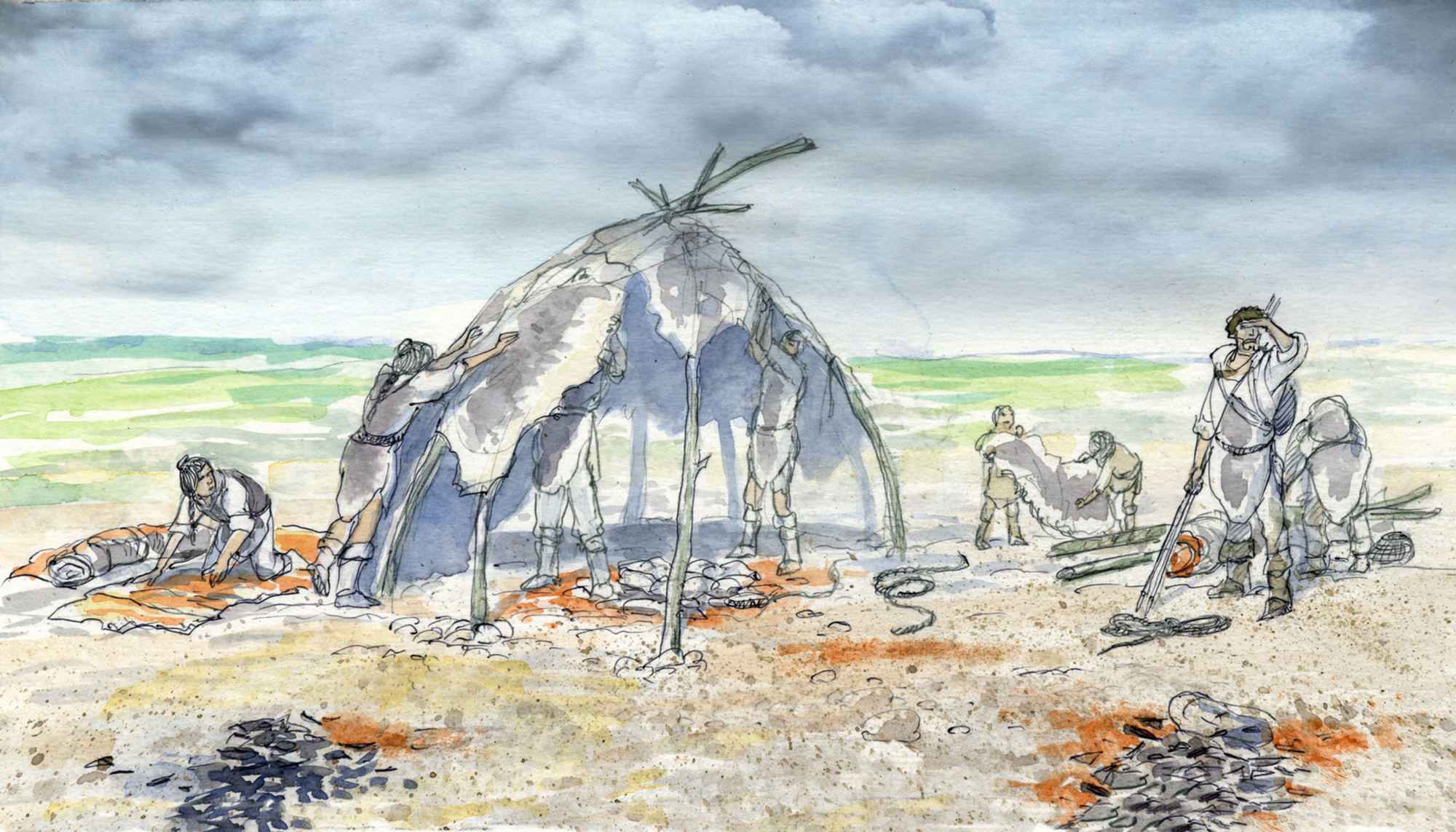
- Home
- The Magdalenians in their camps
- One family, several stays
- D71-1, a very unusual habitation
Aside from their original method for knapping blades, D71-2 and -3 have all the typical characteristics of Magdalenian habitations, where a variety of activities took place. However, this is not the case for the most recent dwelling, D71-1, which may have enjoyed a special status in a larger camp.
Mainly large blades
It seems that the residents of habitation D71-1 were primarily experienced flint knappers producing large blades, whereas in D71-2 and -3, as in the other habitations at Étiolles, the different flint products imply different levels of skill (from clumsy children to the most competent adults).
D71-1 also stands out for the rarity of flint tools, such as burins, used to work reindeer antler, and piercers, used to perforate shells for adornments.
Very little hunting
At D71-1, there are virtually none of the bladelets that adorned sagaie points which are found abandoned around domestic hearths elsewhere. In addition, remains of bones, which are well preserved in locus 2, are very rare. This means that, unlike D71-2 and -3, D71-1 wasn’t a place where hunters made and repaired their sagaies, or where reindeer, brought back from hunting, were cut up. We can therefore suppose that dwelling D71-1 was occupied by a marginally smaller proportion of the group than during previous stays. Perhaps they didn’t hunt and were given food by the occupants of neighbouring habitations that haven’t yet been uncovered.
A carefully rebuilt hearth
During this final stay at D71-1, the group (perhaps incomplete this time) placed large, brand-new limestone slabs around the hearth, which had already been rearranged several times previously.
Ritual gestures
The pebble, engraved with a dead horse, was found among these stone slabs. After D71-1 had been abandoned, one final gesture was made, the “D71-0” episode: people returned to place a horse’s neck on the hearth, whereas all the bone remains found in the three previous habitations belonged to reindeer.



